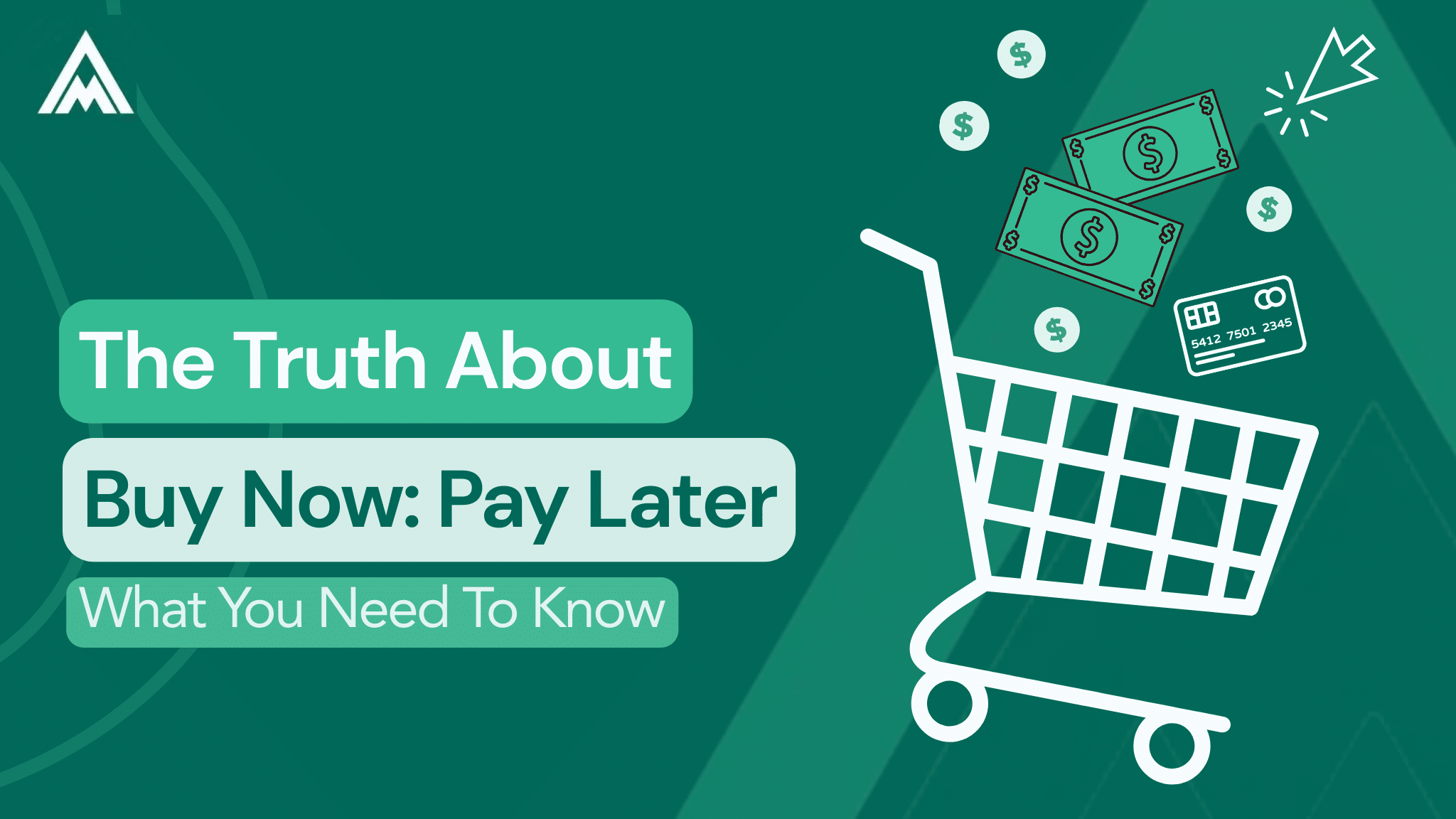Buy Now, Pay Later (BNPL) has become incredibly popular in the past few years. With just a few clicks, you can break a purchase into smaller, interest-free payments. In 2024, the BNPL market was valued at $36 billion and you may have heard the recent news about DoorDash partnering with Klarna for more flexible payments, meaning people can now pay for their meal deliveries or groceries in 4 payments. Whether you’re an individual on a budget, or a small business considering offering BNPL, it’s important to understand the pros & cons.
The Appeal of BNPL
For Individuals:
- Budget-Friendly (at first): BNPL lets you spread out the cost of a purchase—often without interest if paid on time.
- Quick Approval: No lengthy credit checks, making it accessible even for those with lower credit scores.
- Convenient: Most retailers integrate BNPL right at checkout.
For Small Businesses:
- Boosts Sales: Offering BNPL at checkout can increase average order value and conversion rates.
- Competitive Edge: It can help smaller businesses compete with larger retailers offering flexible payment options.
- No Collection Hassles: You usually get paid upfront by the BNPL provider, while they handle the customer payments.
BNPL can seem simple, but it’s still debt—and it comes with strings attached.
For Individuals:
- It’s Still Debt: Even if it doesn’t feel like a credit card, you still owe the money. Multiple BNPL purchases can quickly stack up.
- Late Fees: Missing a payment can trigger late fees and damage your credit (depending on the provider). A survey from 2024 found that 34% of BNPL users had paid late on at least one plan that year.
- Overdraft Risk: If you aren’t carefully tracking your payment due dates, BNPL withdrawals can hit your checking account unexpectedly, causing overdraft fees or bounced payments from your bank.
- Budget Blind Spot: Because the payments are smaller, it’s easier to overextend yourself without realizing it.
For Small Businesses:
- Higher Fees: BNPL providers typically take 4–6% per transaction, which is more than standard credit card processing fees.
- Refund Complexity: Returns and disputes may not be as smooth as with traditional payment methods.
- Customer Impact: While offering BNPL may boost sales, it can also encourage overspending and potentially lead to financial stress for your customers.
Let’s take a look at some of examples of BNPL in real life:
For Individuals:
Sarah buys a $500 couch using BNPL in 4 payments of $125 over two months. It feels manageable and interest-free, so she checks out without a second thought.
The next week, she uses BNPL again to buy a $200 coffee table – another 4 payments of $50.
A week later, she grabs a few things for her home office: a chair and a monitor for $400 total, equaling 4 payments of $100.
Individually, these all felt affordable. But she now has $125 + $50 + $100 = $275 in BNPL payments due every two weeks or $550/month.
When her rent, car insurance, and utility bills hit in the same week as her next round of BNPL auto-payments, she’s caught off guard. Her checking account doesn’t have enough to cover it all.
She misses one BNPL payment and gets hit with a $30 late fee. Worse, when the app tries to auto-withdraw again, it overdraws her account, which triggers a $35 bank overdraft fee. She has to scramble to transfer money to avoid more penalties.
Final cost: Over $65 in fees… and she’s not even halfway done paying off the furniture.
Takeaway: BNPL feels manageable in isolation, but if you’re not tracking your total commitments, it can wreck your budget fast.
Smart Use: Spreading Out a Big Expense
John’s laptop dies, and he needs a new one for remote work. He finds a $1,200 model and chooses BNPL with no interest over 6 months. He builds the $200 monthly payment into his budget and calendar reminders. He finishes paying it off on time, resulting in no fees, no surprises.
BNPL can be helpful when it’s planned and part of a realistic budget.
For Small Businesses:
Offering BNPL to Customers Increases Sales— But at a Cost
Luna runs an online boutique selling handmade jewelry. She adds BNPL to her checkout process and sees a 20% increase in average order size. But the BNPL provider takes 6% of every sale, which cuts into her already thin profit margins. Luna decides to raise her prices slightly and reviews her cost structure to make it work.
Higher sales are great, but make sure the margins still make sense.
Using BNPL to Stock Inventory— Tempting but Risky
Marcus owns a small coffee shop and uses a BNPL app to buy $1,000 in bulk supplies. It’s interest-free for three months, so he figures it’s a no-brainer. But sales dip unexpectedly, and he struggles to keep up with the payments. He’s hit with late fees and ends up dipping into personal savings to stay current.
Without solid cash flow or a backup plan, BNPL can create more stress than it solves.
Tips to Use BNPL Wisely
If you’re a consumer:
- Use BNPL only for planned purchases, not impulse buys.
- Track your payment dates and your bank account balance.
- Pay attention to other automatic payments you have, like a phone bill, insurance, or utilities.
- Avoid stacking multiple BNPL purchases across different apps or stores.
If you’re a business owner:
- Weigh the benefit of increased sales against the added transaction fees.
- Review your margins and pricing to ensure BNPL won’t hurt profitability.
- Be transparent with customers about what BNPL is, and what it isn’t.
Final Thoughts
Just like credit cards, Buy Now, Pay Later isn’t necessarily good or bad —it’s a financial tool. And just like any tool, you should be mindful of how you use it. Whether you’re buying clothes and makeup, or managing a business, make sure you understand the full impact.
Have questions about how BNPL fits into your personal or business finances? Reach out, I’m happy to help you think it through.

